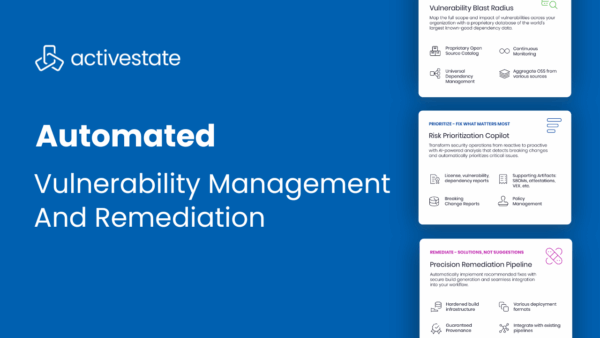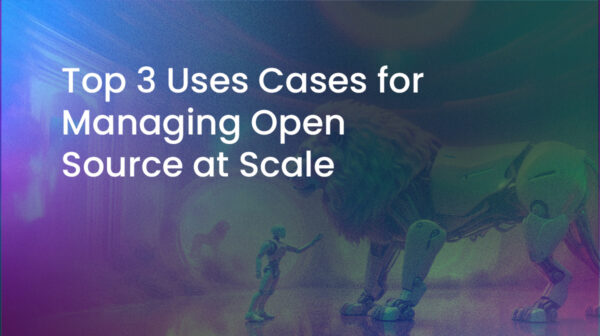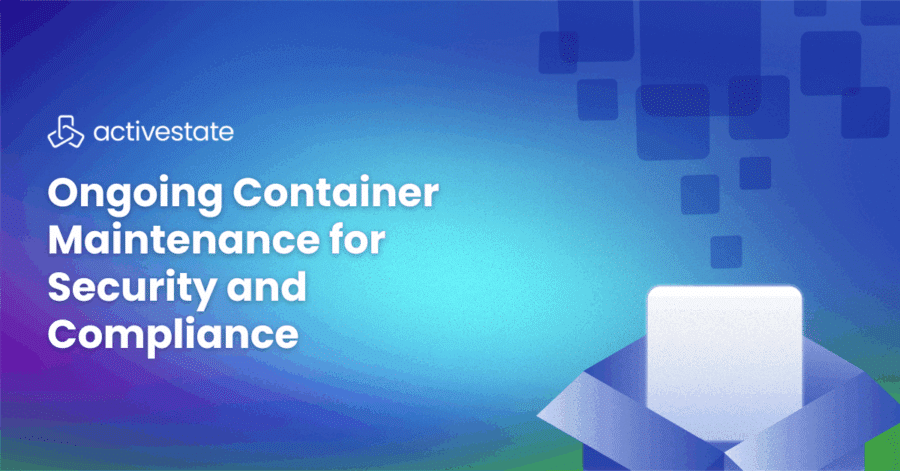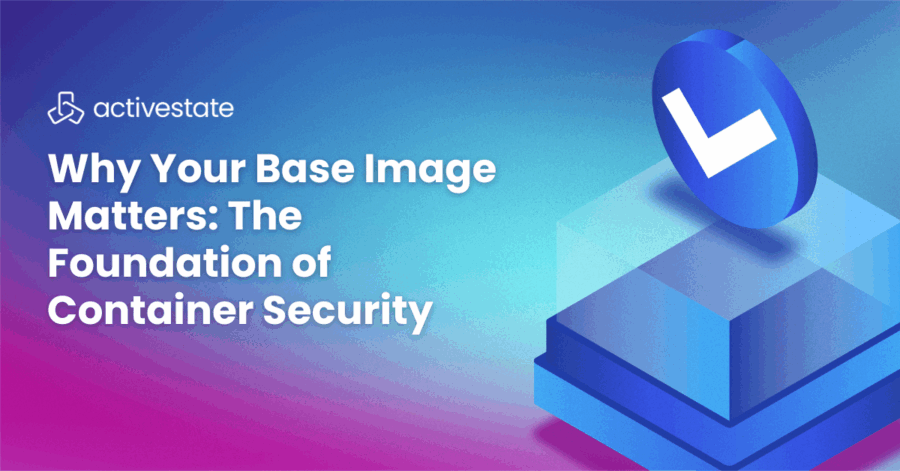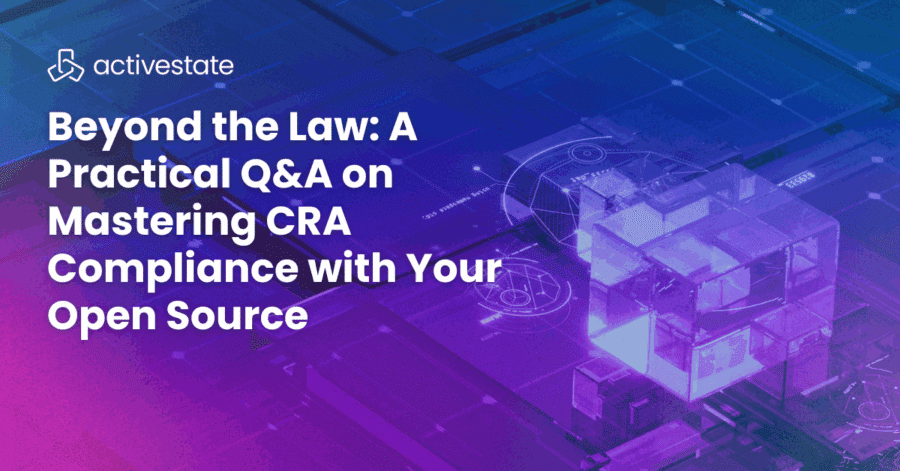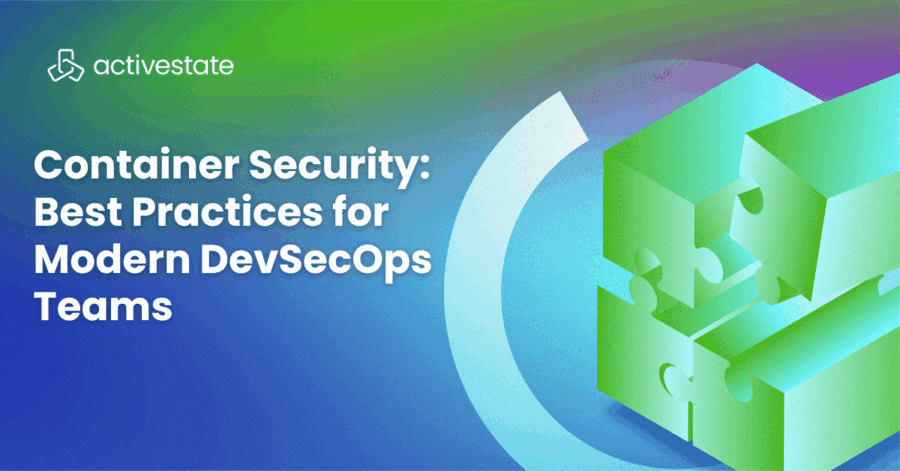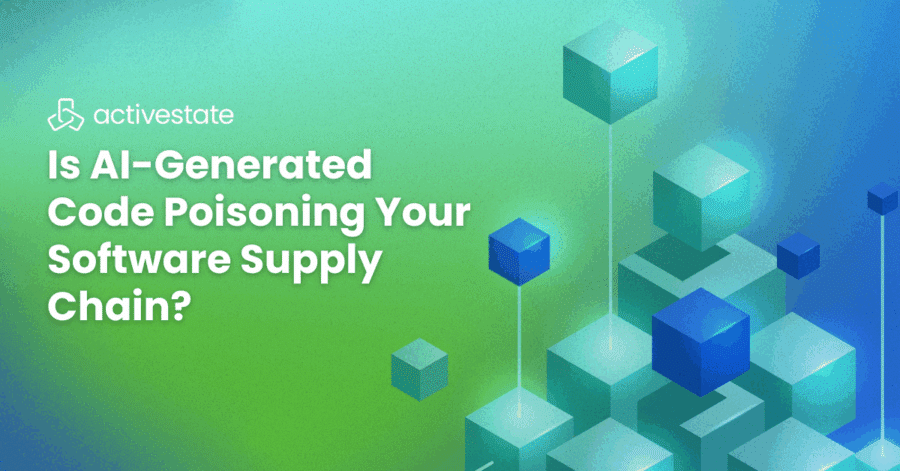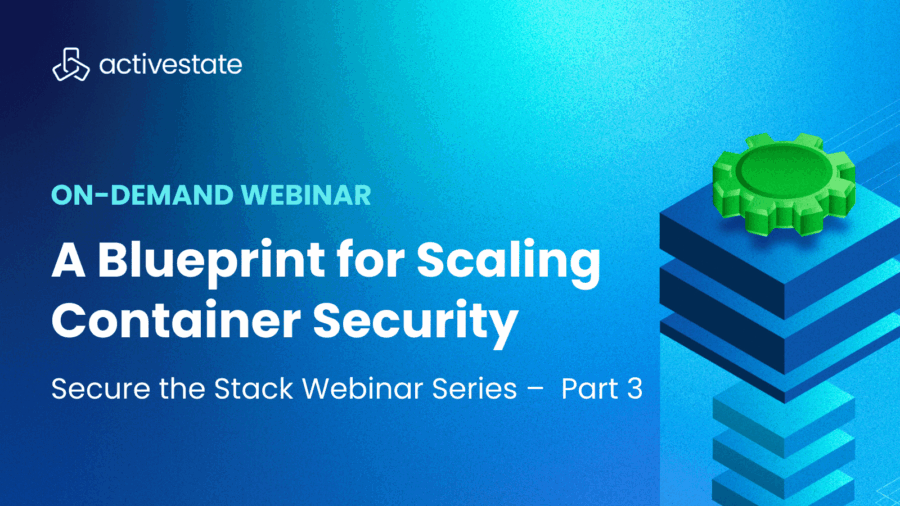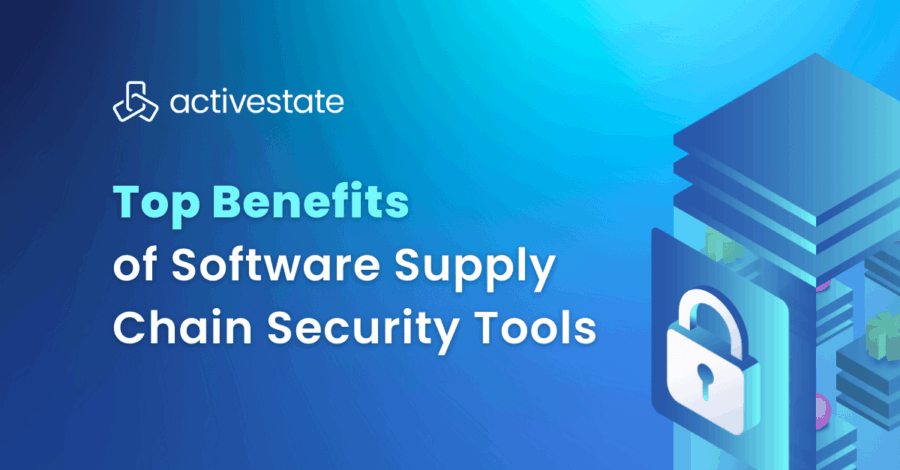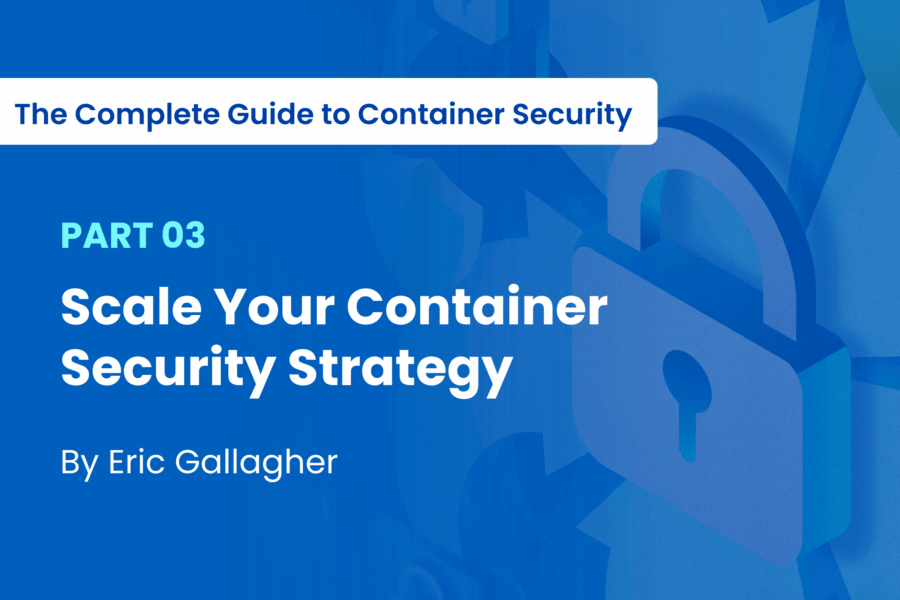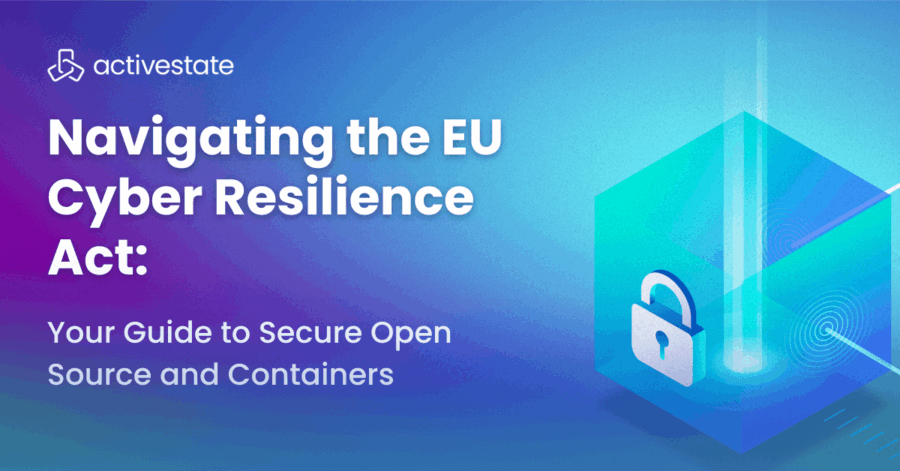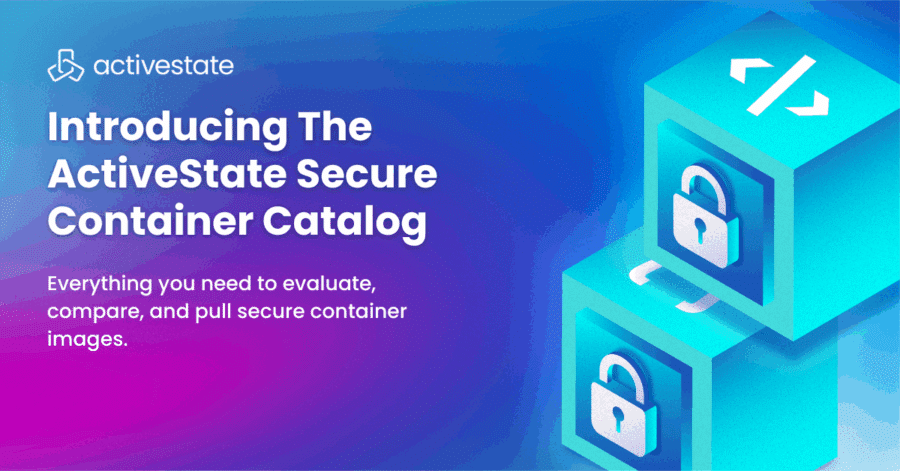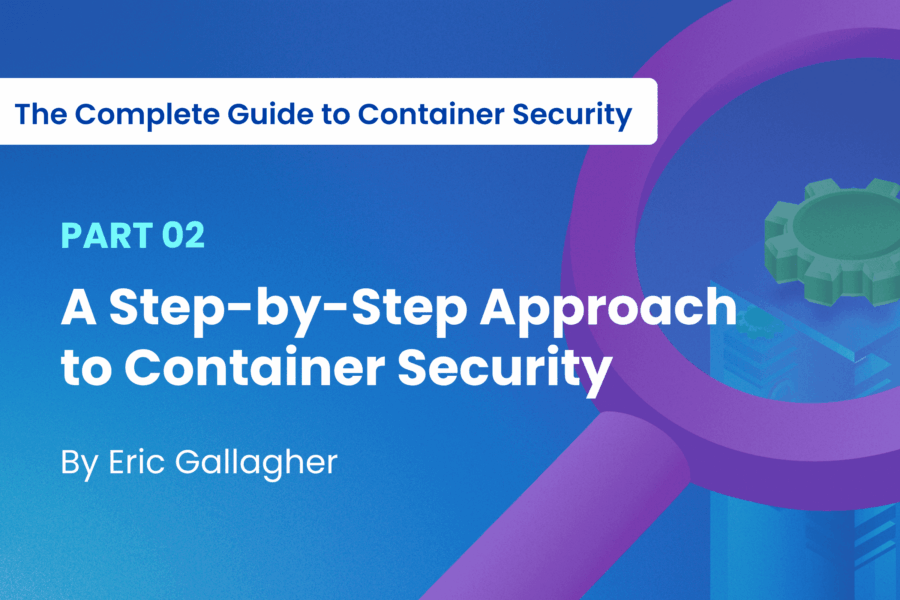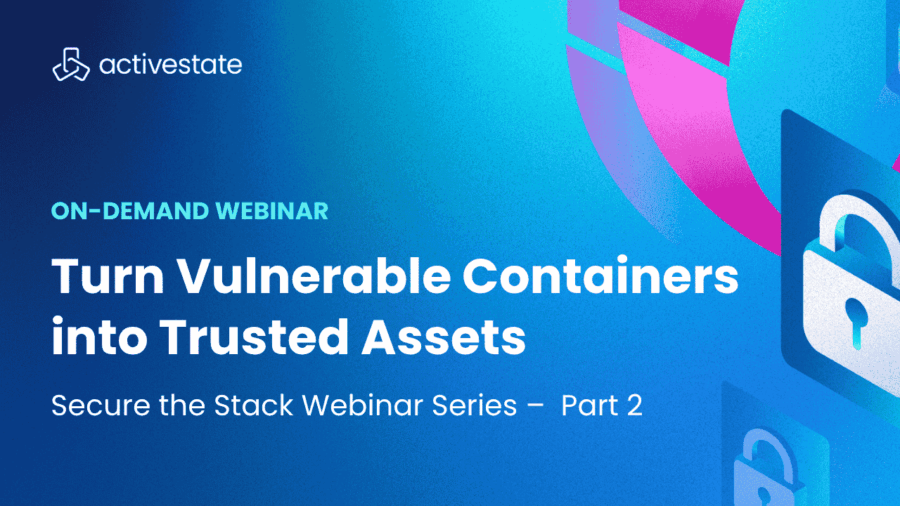Resources
Featured content
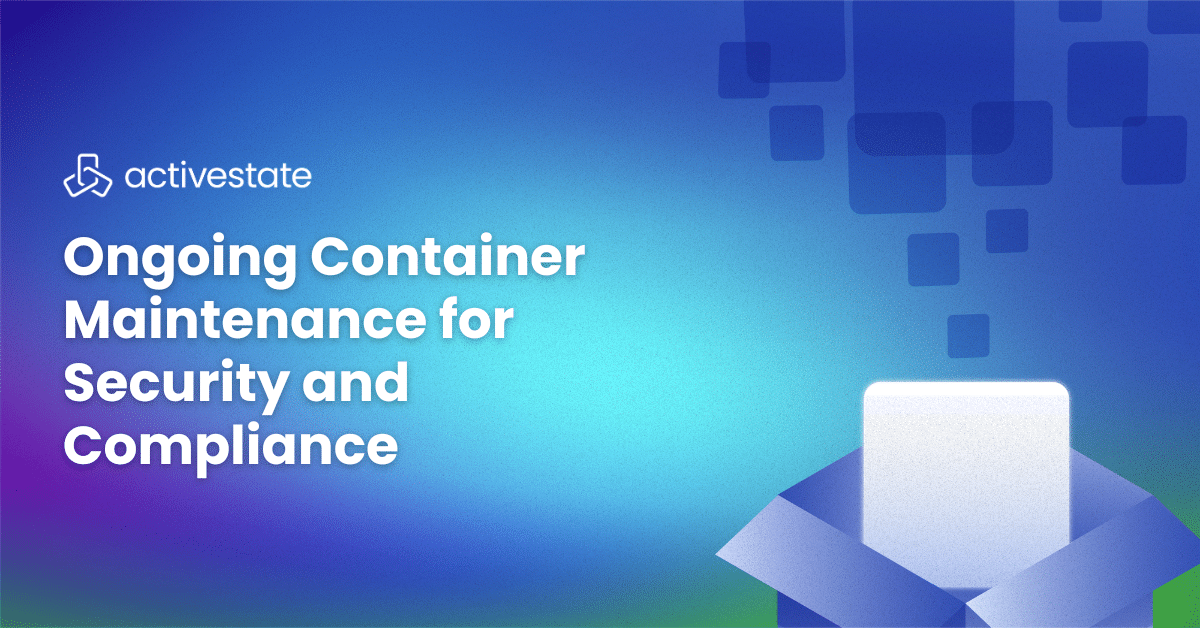
Blog
Ongoing Container Maintenance for Security and Compliance
Building a secure base and compiling from source form the foundation of container security. But DevSecOps teams face a bigger challenge: proving that images remain ...
Read More
New to ActiveState? Start here.
Automated Vulnerability Management & Remediation with ActiveState
May 1, 2025
Product Demo
ActiveState enables DevSecOps teams to not only identify vulnerabilities in open source packages, but also to automatically prioritize, remediate, and deploy fixes into production without ...
Read More
Top 3 Uses Cases for Managing Open Source at Scale
July 25, 2024
Blog
Managing open source complexities can slow down development. Point solutions only let you be reactive. Learn how to become proactive.
Read More
Tech Debt Best Practices: Minimizing Opportunity Cost & Security Risk
April 29, 2024
Whitepaper
Tech debt is an unavoidable consequence of modern application development, leading to security and performance concerns as older open-source codebases become more vulnerable and outdated. ...
Read More
Filters
- All
- Blog
- Case Study
- Data Sheet
- Product Demo
- Quick Read
- Video
- Webinar
- Whitepaper
All
- All
- Blog
- Case Study
- Data Sheet
- Product Demo
- Quick Read
- Video
- Webinar
- Whitepaper
Ongoing Container Maintenance for Security and Compliance
December 30, 2025
Blog
Building a secure base and compiling from source form the foundation of container security. But DevSecOps teams face a bigger challenge: proving that images remain ...
Read More
Why Your Base Image Matters: The Foundation of Container Security
December 23, 2025
Blog
When building a house, you wouldn’t build on a cracked foundation. Yet, in the world of container development, that is precisely what happens when engineering ...
Read More
Mastering CRA Compliance with Your Open Source – A Practical Q&A
December 16, 2025
Blog
We sit down with Moris Chen, ActiveState’s VP of Customer Success, to move past the legal theory and into the practical steps every development team ...
Read More
Container Security: Best Practices for Modern DevSecOps Teams
December 11, 2025
Blog
In 2025, containers are everywhere, powering CI/CD pipelines, supporting cloud-native development, and driving faster software delivery. Yet for many DevOps and security teams, container adoption ...
Read More
Is AI-Generated Code Poisoning Your Software Supply Chain?
December 3, 2025
Blog
Playing With Fire It’s hard not to recall Greek mythology when discussing generative AI. Just as Prometheus stole fire from the gods and unlocked humanity’s ...
Read More
Scaling Security: A Blueprint for End-to-End Container Protection
December 2, 2025
Blog
Scaling container security isn’t just a tooling upgrade, it’s requires the right structure and a framework. In this 20-minute session, you’ll learn how to strengthen ...
Read More
Top Benefits of Software Supply Chain Security Tools
November 26, 2025
Blog
The Secure Curated Catalog Advantage In the modern software supply chain, the risk isn’t just in how you build software, but in what you build ...
Read More
Scale Your Container Security Strategy
November 21, 2025
Blog
Learn and adopt the techniques today’s top engineering teams use to keep their images risk-free, secure, and compliant.
Read More
Navigating the EU Cyber Resilience Act: Your Guide to Secure Open Source and Containers
November 19, 2025
Blog
The digital landscape is rapidly evolving, and with it, the regulatory environment. For businesses operating in or selling to the European Union, the upcoming European ...
Read More
Introducing: The ActiveState Secure Container Catalog
November 12, 2025
Blog
Let’s address the elephant in the room. Back in June, we launched ActiveState Secure Containers, our low-to-no CVE container images built from source with full ...
Read More
A Step-by-Step Approach to Container Security
November 11, 2025
Resources
Learn and adopt the techniques today’s top engineering teams use to keep their images risk-free, secure, and compliant.
Read More
Securing the Pipeline: Turning Vulnerable Containers into Trusted Assets
November 5, 2025
Resources
Building containers isn’t just about speed, it’s about trust at every layer. In this 20-minute session, you’ll learn practical ways to harden your images, lock ...
Read More


